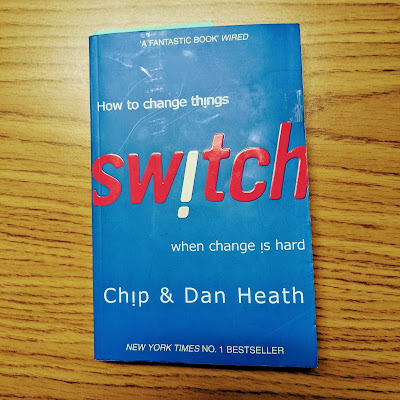"To find bright spots, we need to ask ourselves: "What's working, and how can we do more of it?"" (p. 45)
Chapter 2 of the book "Switch" has me thinking about how my team can do more to seek out bright spots and use those to spark change throughout the district.
Here are some ideas for next school year:
Celebrate examples of teachers using technology in impactful ways
When we ask our teachers to try something new and innovative in their classrooms, that can make many of them feel vulnerable. We need to make sure we encourage our teachers to take those risks and try new things by celebrating their successes as much as possible. I have tried to do that by sharing their stories on social media platforms, such as Twitter and Instagram. However, I could definitely do a better job of sharing these stories on more in-district communication platforms, such as our district websites or school newsletters.
Bring in other teachers to observe impactful technology use
Informal observations can be a really meaningful way for educators to grow in their own practice. Sometimes we just need to see something in action in real time to get the confidence and inspiration we need to try something new ourselves. Teachers can also take notes and reflect later on strategies used during the lesson that they can take and modify for their own classrooms. I have never asked a teacher if I can bring someone to observe, but it is certainly something I hope to do next school year.Encourage teachers to share lessons or live recordings
While real time observations are valuable, that's not always realistic when looking at teacher schedules or substitute teacher funding. Another option would be to have teachers share lesson plans or recordings and to organize those plans and resources somewhere accessible to other teachers. In my district, we are planning to create a database of "bright spots" lessons and resources using Google Data Studio. Data studio reports allow teachers to search and filter easily. This will help teachers find examples of lessons created by their colleagues that they can modify and use in their own classrooms.
As far as live recordings, I came across an interesting article today titled, "Opening the Door to Professional Learning." The author, Adrian Cargal, describes how districts can create digital pinapple charts in order to "build a positive, collaborative culture within schools." This is another great way to share great teaching practices when schedules don't allow for real-time classroom observations.
How do you find and share the bright spots in your schools and districts?

Comments
Post a Comment